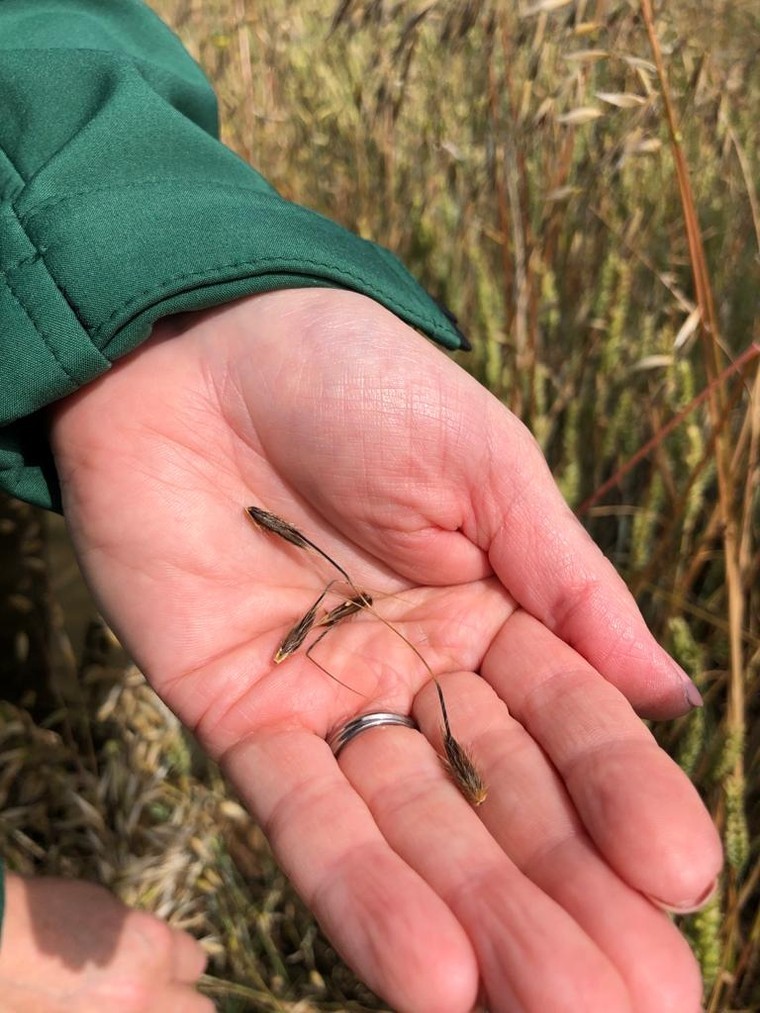Co-ordinated by NIAB and supported by off-patent crop protection manufacturer Life Scientific, it is hoped that the information provided from samples submitted will provide an updated picture of wild oat herbicide resistance, and also a general picture of where we are with wild-oats currently across the UK, says NIAB’s weed biology specialist, John Cussans.
There are two species of wild oats that are weeds in the UK – the common wild oat and the winter wild oat.
The common wild oat (Avena fatua) is an important weed in all parts of the UK and grows in most soil types, causing problems in winter and spring crops. The winter wild oat (Avena sterilis ssp. ludoviciana) has a more localised distribution and is an issue in winter crops.
Whether you have one or both types, wild oats are very competitive weeds and can act as hosts for pests and diseases, such as barley yellow dwarf virus.
“Wild oats are definitely on the rise, we are seeing more and more across farms as a result of changing patterns of herbicide use and agronomy practices,” adds Ruth Stanley, country manager for Life Scientific.
Changes in attitude to herbicides such as a reduction in the use of ALS-based herbicides for black-grass control have had an impact on wild oat numbers she acknowledges.
“Whilst ALS herbicides are not used as much in the rotation as in previous years, they do still control wild oats very effectively, but this has been slightly forgotten,” she says. “Growers are dropping ALS herbicides to prevent resistance in black-grass”
“Practices such as a reduction in deep cultivations will also be contributing to an increase in wild oat numbers.”
Critical to the success of this scheme is the quality of samples that are being sent in for testing, points out John.
“The best time to collect mature seeds is mid July- just into August. If the seeds are still soft and when cut in half are still soft then they are un-ripe and not ready.”
“The best way to collect seeds is to run your hand along the wild oats and the seeds will shed out quite naturally. You don’t strip the seeds off the head, or cut the heads off.”
“We need about 3 coffee mugs full of seed! In comparison, we would need just 1 coffee cup for black-grass testing.”
“This is because wild oat seeds are much larger than black-grass or Italian ryegrass, they have awns and when you collect them you often get other parts of the flower as well, so just pack them down as much as possible.
Mr Cussans points out that wild oat seed needs to be handled very carefully as the seed can easily become quite dormant and therefore difficult to test.
“So alongside ensuring the seed is absolutely ripe when collected, it is also best to let the seeds dry down for a few days and then pack them up in a paper bag, not a plastic bag or they will sweat,” he adds.
“We also have a questionnaire that must be completed with the sample. NIAB members will have had the form emailed to them already, or contact Life Scientific or via either of us on Twitter.”
“The form will provide us with information such as what herbicides have been used on the crop so we know what we are testing for.”
Results will be available in November, around the time of the Croptec event.
Mr Cussans points out that the initiative is not necessarily about collecting wild oats samples that are thought to be resistant. “If we only got resistant wild oat samples that would give us a really skewed picture of where we have got to with resistance. Wherever there are wild oats, for whatever reasons, we are interested in looking at a sample,” he says.
Top tips for collecting wild oats seed samples
- Timing is key to ensure the seeds are ripe. Usually end July-beginning August
- Don’t strip the seeds off the head, or cut heads off. Gently run your hand along the wild oat.
- nsure there is enough seed – remember 3 coffee mugs full!
- Dry the seed for a few days and send to NIAB in a paper bag – NOT a plastic bag- along with a completed questionnaire.
To see a video showing how to collect wild oat seeds go to https://www.niab.com/virtual-event-hub/weed-management/wild-oat-seed-sampling-video-form




